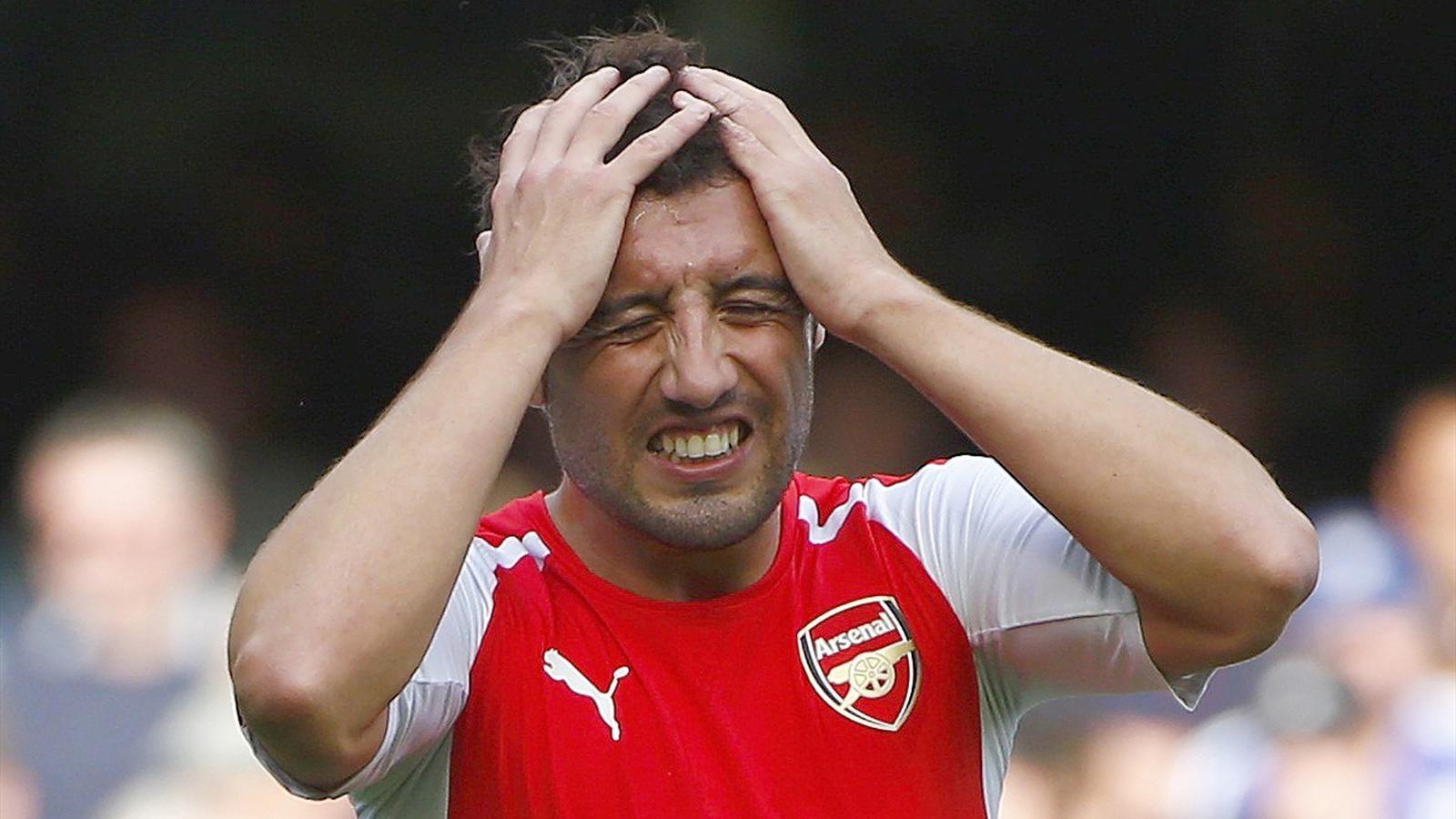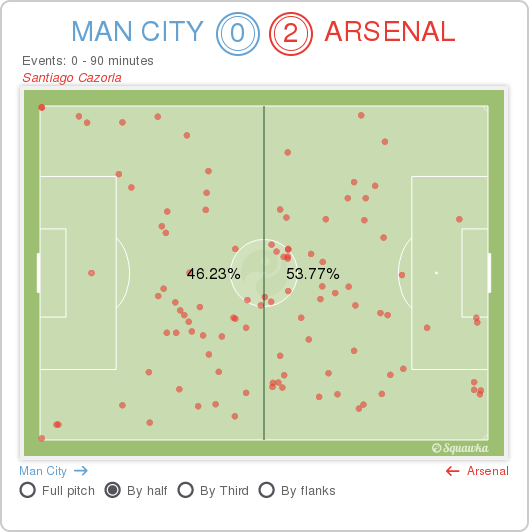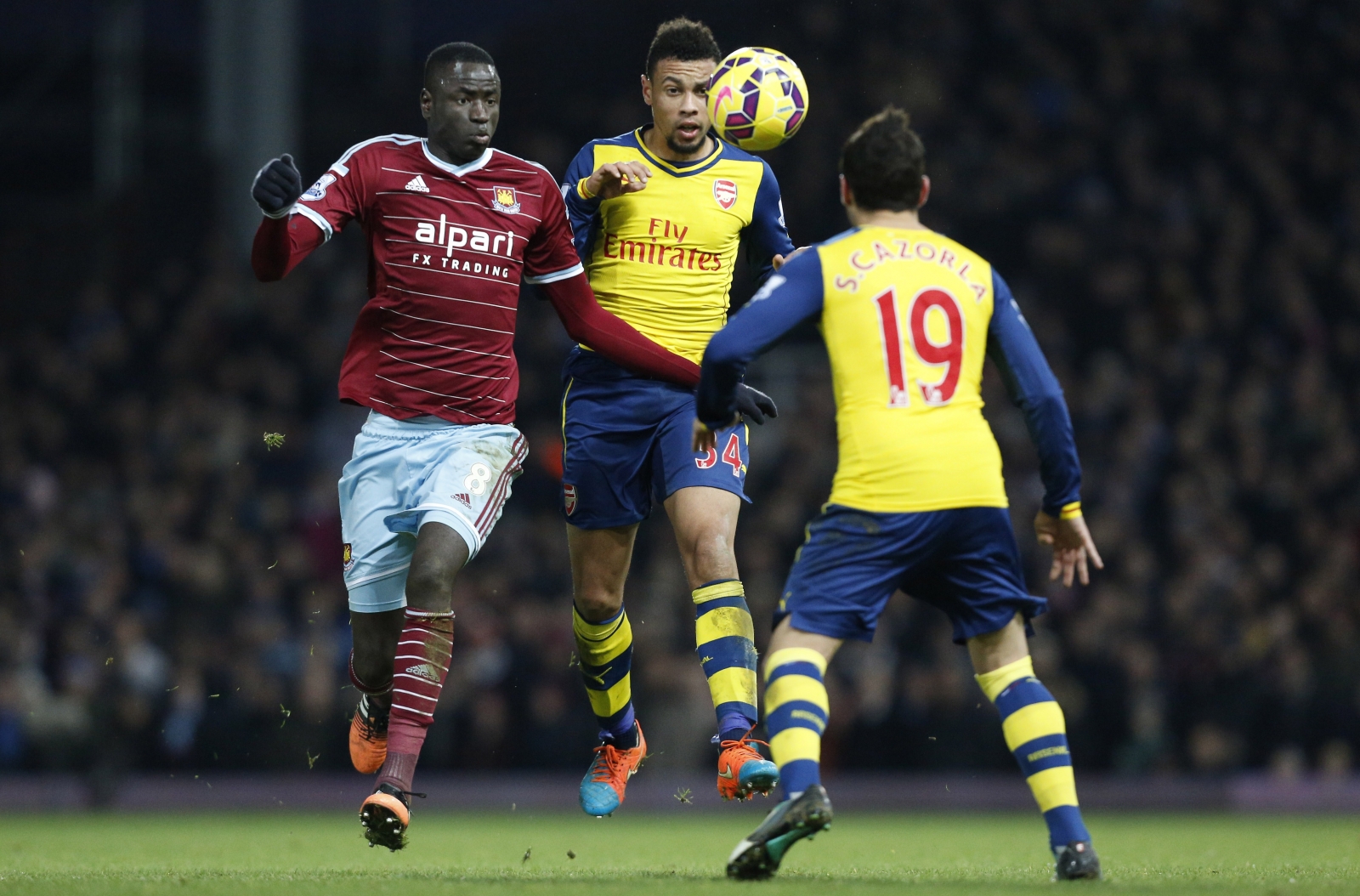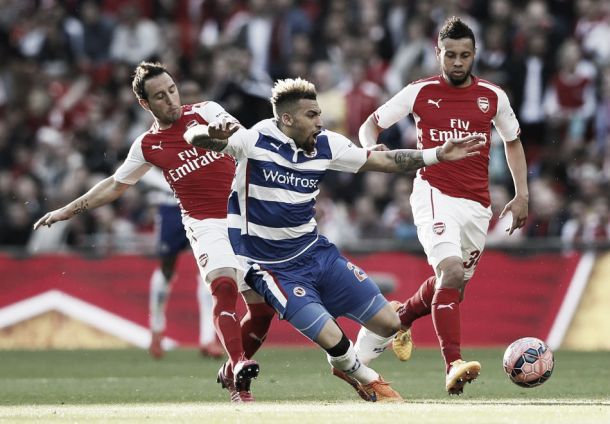Santiago Cazorla Gonzalez has built up a reputation as one of the Premier League’s prominent attacking threats from midfield, since swapping the Costa del Sol for North London.
The Spaniard is arguably reaching the twilight of a glistening career at club and international level, turning 30 last December. An inevitable loss of acceleration and fitness has coincided with his current club investing in a plethora of attacking options. Arsene Wenger has brought in record signing Mesut Ozil, the dynamic Alexis Sanchez and the pacy Danny Welbeck from Real Madrid, Barcelona and Manchester United respectively.
The French manager has also found success in some of his younger players, with Aaron Ramsey and Francis Coquelin impressing at the Emirates this campaign. The Gunners arguably have their strongest squad in a decade and hold the likes of Jack Wilshere, Theo Walcott and Tomas Rosicky on the substitutes bench. With an abundance of ineffable, fresh talent able to apply their trade behind the striker, how has Santi Cazorla found himself in the starting line-up?
At the beginning of the season, Arsenal fluctuated between last campaign’s customary 4-2-3-1 formation and an unfamiliar 4-1-4-1 system. The former has proven to be the most successful, housing two holding midfield players to protect the defense and three attacking talents able to provide for Olivier Giroud. Cazorla initially found himself part of the midfield three, usually on the left of Ozil or Ramsey.
However, finding a place for the former Malaga man proved difficult for the Arsenal management team with Wilshere impressing and Ramsey carrying on his form from the previous season. Club captain Mikel Arteta or Mathieu Flamini partnered Wilshere in those two holding positions, allowing the England international to push forward and create chances with the players in front of him. With Ramsey, Ozil and Sanchez cemented as the three behind the forward, Cazorla’s chances proved limited in his preferred central position.

Despite a dramatic opening day victory over Crystal Palace, the FA Cup holders struggled to replicate their scintillating start of the year before and subsequently managed just six wins in their opening 16 league fixtures. Injuries helped contribute to this frustrating run with Mathieu Debuchy, Alex Oxlade-Chamberlain, Jack Wilshere, Olivier Giroud and Mikel Arteta all picking up decisive knocks.
Like with any team, these injuries enabled those on the sidelines an opportunity in the starting XI. Hector Bellerin may be the prime example of this, replacing Debuchy at right-back with Carl Jenkinson on loan at West Ham. The ex-Barcelona defender has made a real impression on the fans and has made the position his own during this breakthrough campaign.
Another shock has been the emergence of Francis Coquelin in the first team, the 24-year-old being recalled from his loan at Charlton Athletic in early December. Although squad numbers do not herald much importance in the modern game, the former French U21 international’s 34 shirt signals just how far away he was from Arsene Wenger’s plans. Adding the grit and determination that Arsenal teams have lacked since the departure of Gilberto Silva in 2008, Coquelin’s revival has been crucial in the club’s acquisition of Champions League football.
Coquelin’s influence was on show when the London outfit traveled to the Etihad to take on defending champions Manchester City, Arsenal understandably underdogs having not recorded a win in Manchester since Samir Nasri lead the Gunners to victory against the Citizens in 2010. Another Frenchman stole the headlines in 2015, with the former Lorient loanee winning 100% of his tackles, clearing 11 times and intercepting six passes.
A stunning performance from Cazorla was not overshadowed though, opening the scoring from the penalty spot before assisting the second with a free-kick. Although the team sheet saw the two time European Championship winner on on the left, the normally forward minded footballer spent 53.77% of the match within his own half. His eight successful take-ons, five clearances and six blocks made it not just a display of attacking quality, but that of defense too.

After that record breaking match, Wenger stated:
"Since he has played centrally he has taken [his game to] another dimension, because on the flank he was a bit more exposed to things where he was not at his best.
“In the middle of the park, he gets you out of situations where you are under pressure. He is always technically perfect and in our recent games he has certainly been in the best form of his career.”
Although versatility may prove a hindrance to some, notably Wayne Rooney’s goalscoring record suffering due to his capability in midfield, Cazorla has relished his chance in his newly found holding role. Since retreating to a deeper position, the playmaker has scored twice and assisted his team mates on five occasions in just 12 starts. This is contrast to his five goals and four assists in his first 18 starts, despite playing predominantly in the opposition’s half of the pitch.
Santi’s prosperity can be creited not only to his versatility and technical ability, but to his partner. When Cazorla arrived in England following a £16m move from La Liga, his strengths consisted of vision and passing in an offensive sense. Outstanding individual performances away to Liverpool and Reading, in which he converted a hat-trick, caught many pundits off guard. It was clear from the offset that the board had worked some magic in the transfer window, with Malaga having to sell during a financial crisis at the Estadio La Rosaleda.
These skills, alongside some fantastic dribbling, have been transferred into his new position with ease. There is no doubt that Coquelin has helped this famed transition, doing the dirty work and allowing his partner to dictate the tempo and control the game. This can be likened to the MLS bound Steven Gerrard’s change in play, stepping down from a more forward role to help dominate possession. As individuals, the two could hardly be more different but it is this diversity that makes their partnership even more formidable.

The Gunners surrendered their 10 game unbeaten run against Swansea on Monday night, with Bafetimbi Gomis notching his second goal against Arsenal in two games. Amongst this run of form, that could see the FA Cup finalists finish in second place for the first time since 2003, there was talk about this squad challenging for the league next season.
Recruitment will be key in the summer, with a new spine needed. A harrowing season for Wojciech Szczesny has seen the 25-year-old ‘keeper lose his place to David Ospina, but rumours are suggesting an improvement on the two internationals could be brought in this summer. Money could be spent on a new centre-back to ultimately replace the aging Per Mertesacker and many are still calling for a world class striker, despite 18 goal Olivier Giroud delivering up front.
The search for a new defensive midfielder may also continue, as Sami Khedira and William Carvalho were heavily linked with the London club last year. With few on the market, a new signing may find it difficult to dislodge Coquelin and Cazorla in the starting XI. However, with the influence the latter can have on the game and his newfound capability in a deeper position, the Spaniard could find himself with a new partner come August.










































